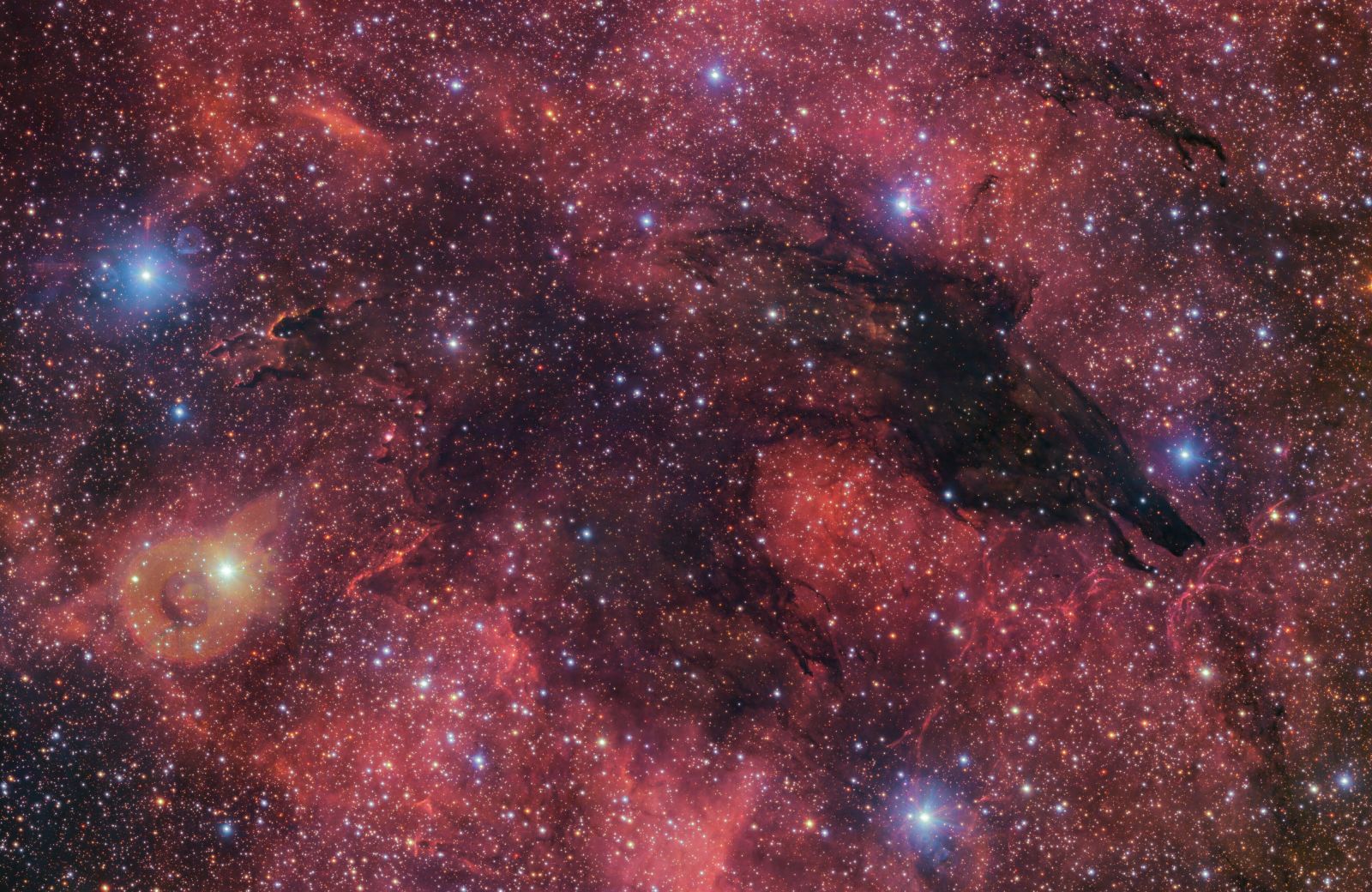Follow us on Google News (click on ☆)

Located in the constellation Scorpius, near the center of the Milky Way, the Black Wolf Nebula lies approximately 5,300 light-years from Earth. This image spans an area in the sky equivalent to four full moons but is actually part of a much larger nebula called Gum 55. If you look closely, the wolf might even resemble a werewolf, its hands ready to grab unsuspecting passersby...
If you thought darkness meant emptiness, think again. Dark nebulae are cold clouds of cosmic dust, so dense that they block light from stars and other objects behind them. As their name suggests, they do not emit visible light, unlike other nebulae.
The dust grains that make up these nebulae absorb visible light and only allow radiation with longer wavelengths, such as infrared light, to pass through. Astronomers study these frozen clouds of dust because they often contain newborn stars in the making.
Of course, the ghostly presence of the wolf in the sky is only possible because it contrasts against a bright backdrop. This image showcases in spectacular detail how the black wolf stands out against the luminous, star-forming clouds behind it. These colorful clouds are primarily made of hydrogen gas and glow reddish hues due to the intense UV radiation emitted by the newborn stars they contain.
Some dark nebulae, such as the Coal Sack Nebula, can be observed with the naked eye – and play a key role in how Indigenous peoples interpret the sky (1) – but not the Black Wolf. This image was created from data collected by the VLT Survey Telescope, which is owned by the Italian National Institute for Astrophysics (INAF) and hosted at ESO's Paranal Observatory in Chile's Atacama Desert. The telescope is equipped with a camera specially designed for mapping the southern sky in visible light.
The image was compiled from pictures taken at different times, each with a filter allowing a specific color of light to pass through. These images were all captured as part of the VST Photometric Hα Survey of the Southern Galactic Plane and Bulge (VPHAS+), which has helped study some 500 million objects in our Milky Way.
Surveys like this help scientists better understand the life cycle of stars in our galaxy. The data obtained is made public via the ESO's Science Portal. Explore this treasure trove of data for yourself: who knows what other strange shapes you might discover in the darkness?
Notes:
(1) The Mapuche people of south-central Chile call the Coal Sack Nebula “pozoko” (water well), and the Incas referred to it as “yutu” (a bird resembling a partridge).